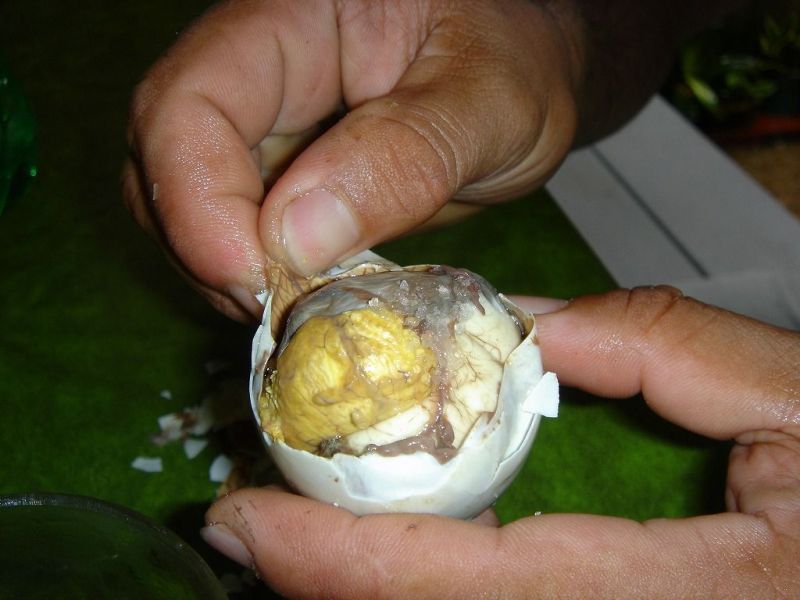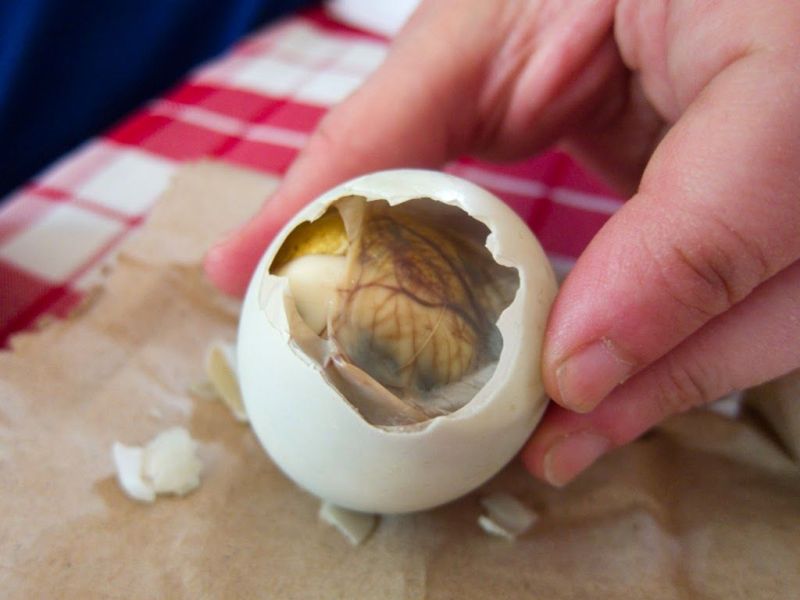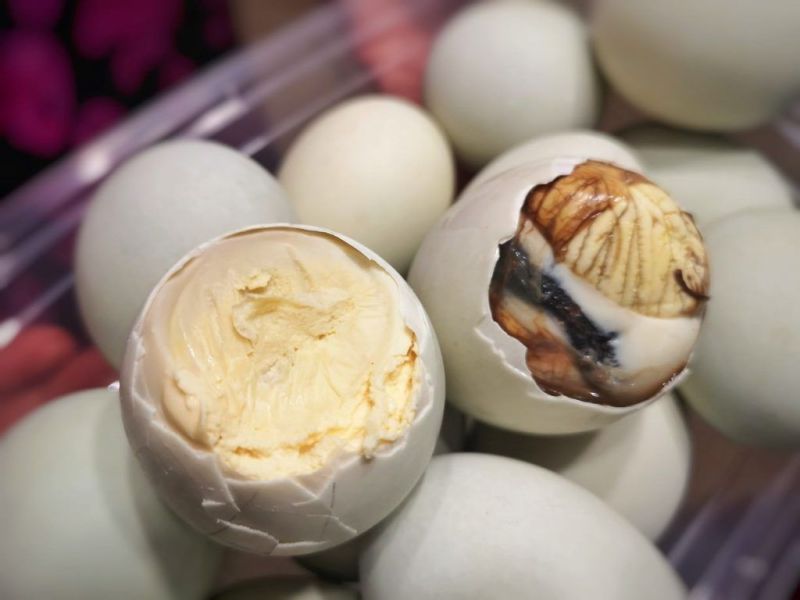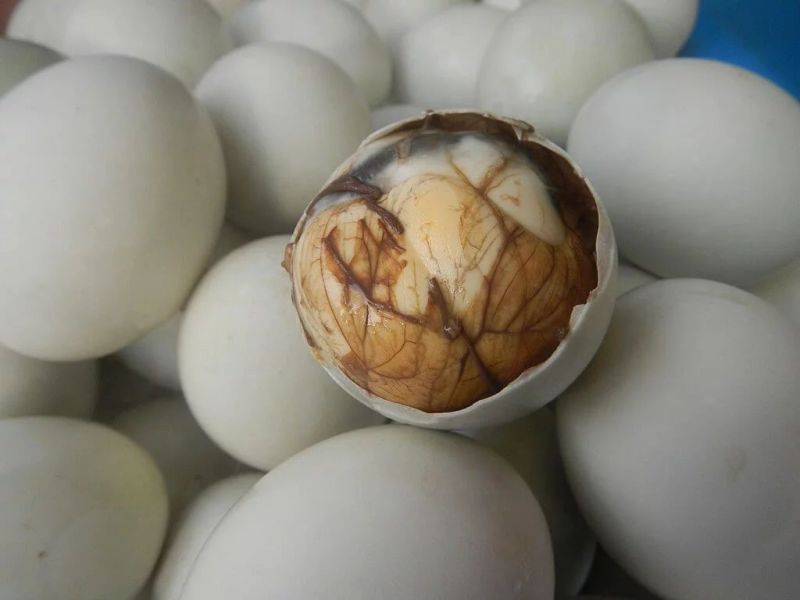What Does Balut Taste Like?
Balut is a popular Filipino street food that sparks curiosity, awe, and disgust all at once for many unfamiliar with this unique delicacy. This boiled fertilized duck egg has a complex taste and texture that’s unlike any other food. As someone who enjoys trying adventurous foods from around the world, I couldn’t resist seizing the opportunity to try balut and see what all the fuss was about.
What Exactly is Balut?
Balut is a fertilized developing duck embryo that is boiled and eaten from the shell. The Tagalog term “balut” translates to “wrapped”, referring to how the duck embryo is wrapped in the egg.
In the Philippines, balut is commonly sold as street food by vendors carrying baskets of boiled balut eggs. They walk through busy streets calling out “Baluuut!” to hawk these warm, boiled eggs to hungry passersby.
The duck eggs must be fertilized and incubated for a period of 14-21 days before they can be considered balut. At this stage, the balut contains a partially developed embryo. The eggs are boiled or steamed before serving, creating a warm and savory snack.
Preparing and Eating Balut – A Step-By-Step Guide

Eating balut takes some guts, but it’s worth a try if you want to experience an authentic Filipino delicacy. Here is a simple guide to preparing and eating your first balut:
First, purchase a freshly boiled balut egg from a street vendor or Filipino restaurant. Look for eggs that feel warm to the touch, indicating they were recently cooked.
When ready to eat, tap the top of the egg gently to crack the shell. Make a small hole and drink the savory broth inside. This gives you an introductory taste of what’s to come.
Next, peel off the cracked shells to reveal the partially developed duck embryo. You’ll see the duckling curled up inside, as well as the egg yolk.
Season the egg with a pinch of salt and pepper. You can also add patis (Filipino fish sauce) or a chili vinegar dip for extra flavor.
Finally, dig right in! Use a spoon to scoop out bites of the egg from the shell. Pop the balut in your mouth whole or bite off smaller pieces to enjoy each element of this unique snack.
The Complex Flavor Profile of Balut
So what does balut actually taste like? Here’s an overview of the complex flavors balut delivers with each bite:
- The broth is salty and savory, providing a rich umami kick. It’s similar to a hard-boiled egg broth but more concentrated in flavor.
- The egg white has a firm, bouncy texture. It’s soft and custardy, much like hard-boiled egg whites.
- The signature element is the duck embryo, which provides a goopy, gamy flavor with earthy, savory notes. The embryo has a soft but slightly rubbery texture.
- When you bite into the yolk, it delivers a creamy, rich taste to balance the other flavors. It coats your mouth with each bite.
- There’s also a subtle crunch when you bite into the thin bones and feathers of the developing duckling. This adds nice textural contrast.
- The overall taste leaves a strong aftertaste that lingers in your mouth long after you finish the egg.
- Seasonings like salt, pepper, or chili vinegar complement the flavors and round out the strong, unusual taste profile.
Think hard-boiled egg meets meaty, goopy, savory flavors and you’ll start to understand the complexity of what balut tastes like. It’s truly one-of-a-kind!
Where Can You Find Balut?

In the Philippines, balut is ubiquitous. Street vendors selling balut eggs roam busy areas, especially at night. You’ll also find balut in Filipino restaurants and food stalls.
Balut is also common street food in Vietnam, Cambodia, and other Southeast Asian countries that have been influenced by Filipino cuisine.
As awareness of Filipino food spreads globally, balut has also made its way to Filipino restaurants and food shops in major cities around the world. In places like Los Angeles, New York, and London, foodies can now try this unique delicacy without having to travel to Southeast Asia.
Trying balut is easiest in areas with large Filipino populations. But don’t be surprised to find balut popping up on the menus of more adventurous restaurants looking to offer bold new flavors.
The Surprising Health Benefits of Balut

Beyond being an adventurous food experience, balut also delivers some healthy bonuses.
Balut is packed with nutrients. As a good source of protein, healthy fats, vitamins, and minerals, it makes for a surprisingly well-rounded snack.
In particular, balut contains high levels of Vitamin A, which supports good vision and eye health.
The eggs are also a source of vitamins B2, B3, B6, B12, and folate, along with minerals like calcium, phosphorus, zinc, and iron.
Plus, balut makes for a low-carb, high-protein food choice. For those on diets like the keto diet or managing diabetes, balut can be an excellent snack when avoiding carbs.
One warning: Balut does contain high levels of cholesterol due to the whole egg and embryo. Those with heart disease or high cholesterol should eat balut in moderation to avoid raising cholesterol further.
Ready to Try This One-of-a-Kind Filipino Delicacy?
Balut certainly isn’t for the faint of heart. The idea of snacking on a boiled duck embryo understandably deters many people. But for adventurous foodies who want to discover unique Asian delicacies, balut is a must-try.
The experience of cracking open the egg, peeling the shell, and consuming the broth, egg, and embryo is truly unique. Beyond the novelty, balut also delivers a delicious and surprisingly complex flavor unlike anything else I’ve ever eaten.
With its savory umami richness balanced by creamy yolk and a runny, gooey embryo, balut has a dedicated fanbase in the Philippines and beyond. It’s well worth sampling this centuries-old Filipino street food if you have the opportunity – just have an open mind and come hungry! Whether you’re visiting Southeast Asia or just looking to expand your culinary horizons at home, be bold and give balut a taste.
